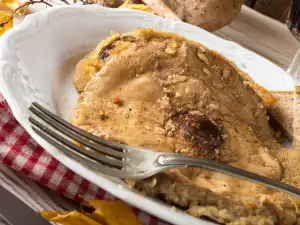Not all kitchen knives are created equal. Making a choice is unbelievably difficult if we're going for quality. The downside is that we cannot even rely on established brands when choosing a kitchen knife because often they bet only on their name and price but not on quality.
Choose a knife carefully since it is an item you'll be using daily. It needs to be high-quality, enduring, well-made.
First, think about what types you need. There is an abundance of shapes and sizes to choose from, depending on your style of cooking and habits. One good solution is a knife set that any kitchen can use.
Before you buy the knives, hold each one of them in your hand for awhile. Each utensil needs to feel right in your hand.

The material the knife is made from is another important element. Determine how much steel is in it and where it is concentrated. Look for welding gaps, especially at the base of the knife handle. That is the weakest spot of any knife.
Flimsy knives are more likely to bend or break at that joining point. Avoid thin knives with plastic or rubber handles. The best ones are crafted from a single piece of steel, forged by hand.
The weight of the knife is also a mark of quality. Light knives are designed for speed and precision. Heavy knives are suited for tough foods like nuts, fresh ginger, palm sugar and other such ingredients.
Well-balanced knives are ideal. With them you can cut easily and without too much effort.
The knife handle needs to be solid, easy to clean and well-built. If it is thin or covered in cheap plastic, it will likely break after just several uses. Old knives with a bone or horn handle are also not a good choice because they become brittle with time.

Many consider ceramic to be the best material for knives. A ceramic knife can be sharpened like a scalpel, retain its edge for a long time and not rust. However, this type is incredibly fragile and can break with ease. Because of this, master chefs usually go for stainless steel knives.
After choosing the material of the blade, take a look at the width of the cutting edge, as well as the thickness and smoothness of the blade. The highest quality ones are smooth, polished, without any defects in the metal. The cutting edge needs to "flow" evenly along the entire length from the point to the handle, without any breaks anywhere.
Even if you find the best knife on the market, it needs to be maintained, always kept sharp. A whetstone is a must. Store them properly - a wooden knife block is ideal.




















Comments